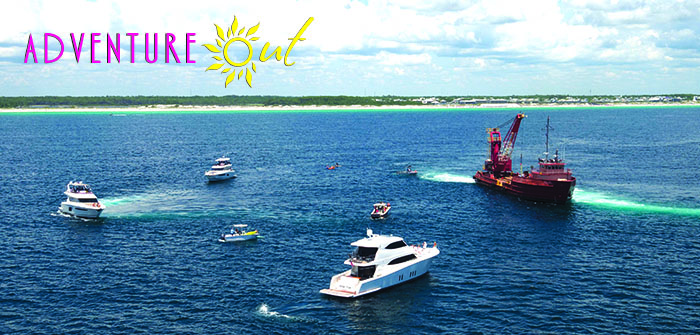By Liesel Schmidt
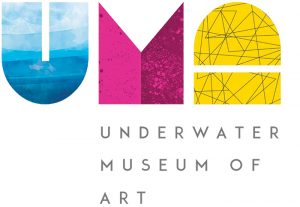 They say that art imitates life—but what if life actually createsthe art? Or, to put more fine a point on it, makes an already spectacular piece of art something truly remarkable and unique in a way that no human hands and no tool ever could? Such might be said to be the concept behind the sculptures on display at the Underwater Museum of Art that that recently opened to the public in Santa Rosa Beach—and as the very first museum of its kind in North America, this is one attraction that’s making art lovers dive deep.
They say that art imitates life—but what if life actually createsthe art? Or, to put more fine a point on it, makes an already spectacular piece of art something truly remarkable and unique in a way that no human hands and no tool ever could? Such might be said to be the concept behind the sculptures on display at the Underwater Museum of Art that that recently opened to the public in Santa Rosa Beach—and as the very first museum of its kind in North America, this is one attraction that’s making art lovers dive deep.
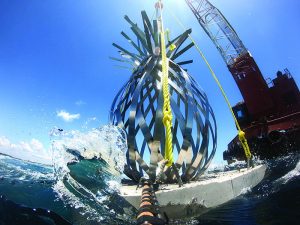 More than just a simple collection of sizeable sculptures assembled within the designated area of one mile set aside by the Cultural Arts Alliance’s Art in Public Spaces program in partnership with the South Walton Artificial Reef Association, the seven pieces that have been installed in the waters of the Gulf of Mexico off Grayton Beach State Park are also part of a larger initiative to create an artificial reef system where ocean life can thrive.
More than just a simple collection of sizeable sculptures assembled within the designated area of one mile set aside by the Cultural Arts Alliance’s Art in Public Spaces program in partnership with the South Walton Artificial Reef Association, the seven pieces that have been installed in the waters of the Gulf of Mexico off Grayton Beach State Park are also part of a larger initiative to create an artificial reef system where ocean life can thrive.
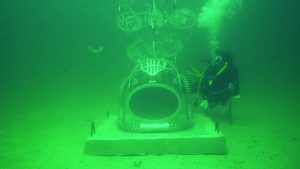 Initially an idea presented by local artist and CAA board president Allison Wickey in inspiration drawn from the works created by underwater artists across the world, the museum neatly aligned with the work already in progress under the direction of SWARA. Simply stated, the mission of the museum is to expand local fishery populations while at the same time enhancing creative, cultural, economic, and educational opportunities for the residents of South Walton as well as the many visitors to the area in a truly unique and visionary way, in addition to providing ecologists, marine scientists, wildlife management professionals, and students with an extraordinary opportunity to study marine life and measure the impact of artificial reef systems on the ecosystem in the Gulf.
Initially an idea presented by local artist and CAA board president Allison Wickey in inspiration drawn from the works created by underwater artists across the world, the museum neatly aligned with the work already in progress under the direction of SWARA. Simply stated, the mission of the museum is to expand local fishery populations while at the same time enhancing creative, cultural, economic, and educational opportunities for the residents of South Walton as well as the many visitors to the area in a truly unique and visionary way, in addition to providing ecologists, marine scientists, wildlife management professionals, and students with an extraordinary opportunity to study marine life and measure the impact of artificial reef systems on the ecosystem in the Gulf.
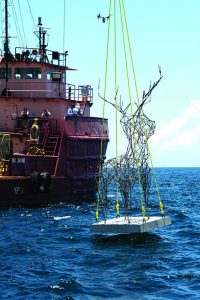 “The beauty of the museum is that the pieces become a part of the natural environment. We have an idea of how they will transform over time, but some of the fun will be seeing marine growth that may alter the appearance of the pieces,” says CAA Executive Director Jennifer Steele. And fun it will certainly be, as the pieces are created using a variety of materials such as metals, concrete, and stone and constructed in such a way that they naturally allow the movement and flow of water and light. Each chosen by juried selection after an open call to artists who presented proposals and were then awarded the commission, the pieces were completed in four months’ time before being permanently installed as a part of the museum.
“The beauty of the museum is that the pieces become a part of the natural environment. We have an idea of how they will transform over time, but some of the fun will be seeing marine growth that may alter the appearance of the pieces,” says CAA Executive Director Jennifer Steele. And fun it will certainly be, as the pieces are created using a variety of materials such as metals, concrete, and stone and constructed in such a way that they naturally allow the movement and flow of water and light. Each chosen by juried selection after an open call to artists who presented proposals and were then awarded the commission, the pieces were completed in four months’ time before being permanently installed as a part of the museum.
Lying within a mile of the shore at a depth of approximately 57 feet, the UMA is open to the public but requires scuba gear to visit. And while not everyone might initially be open to the idea of having to suit up for a trip to the museum, this is one that certainly earns an earmark as a must-see.
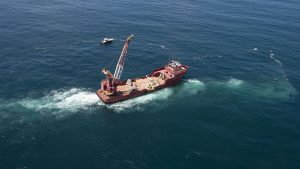 But the seven sculptures currently on exhibit at UMA are just a teaser for things to come, as new pieces will be added annually to expand the museum’s draw—both to visitors of the human kind as well as to the marine life that it will naturally begin to attract as it transforms from art into living reef. Year after year, the UMA will become even more remarkable as the waters shift and the tides work their magic, as the elements make their marks to turn these masterpieces into even more stunning creations that can find no duplication.
But the seven sculptures currently on exhibit at UMA are just a teaser for things to come, as new pieces will be added annually to expand the museum’s draw—both to visitors of the human kind as well as to the marine life that it will naturally begin to attract as it transforms from art into living reef. Year after year, the UMA will become even more remarkable as the waters shift and the tides work their magic, as the elements make their marks to turn these masterpieces into even more stunning creations that can find no duplication.
The Underwater Museum of Art is located at 105 Hogtown Bayou Lane, Santa Rosa Beach, Florida 32549. For more information, visit www.umafl.orgor call (850) 622-5970.

